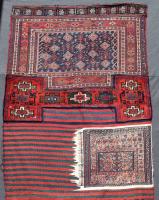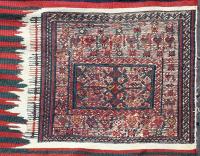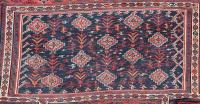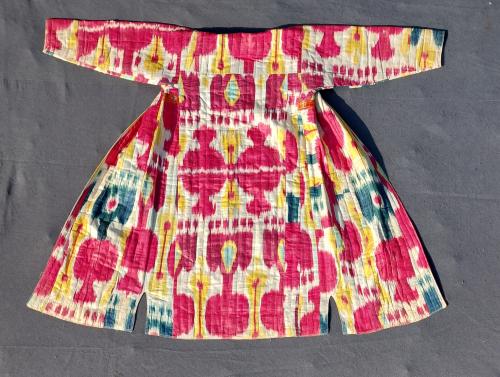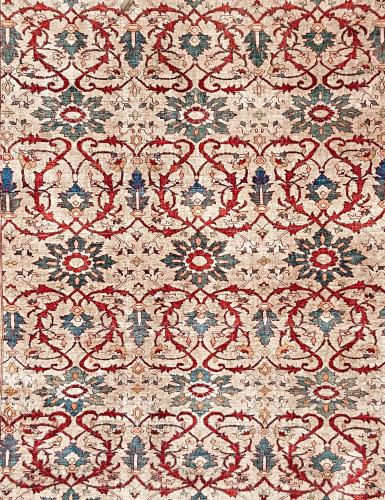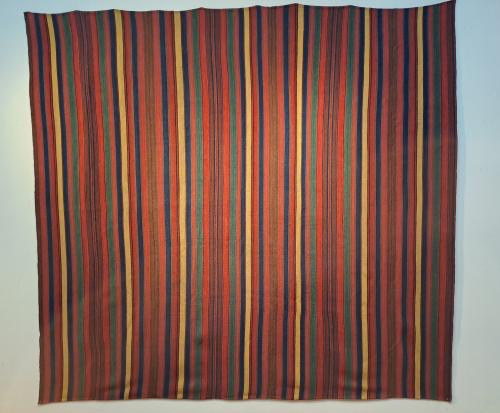
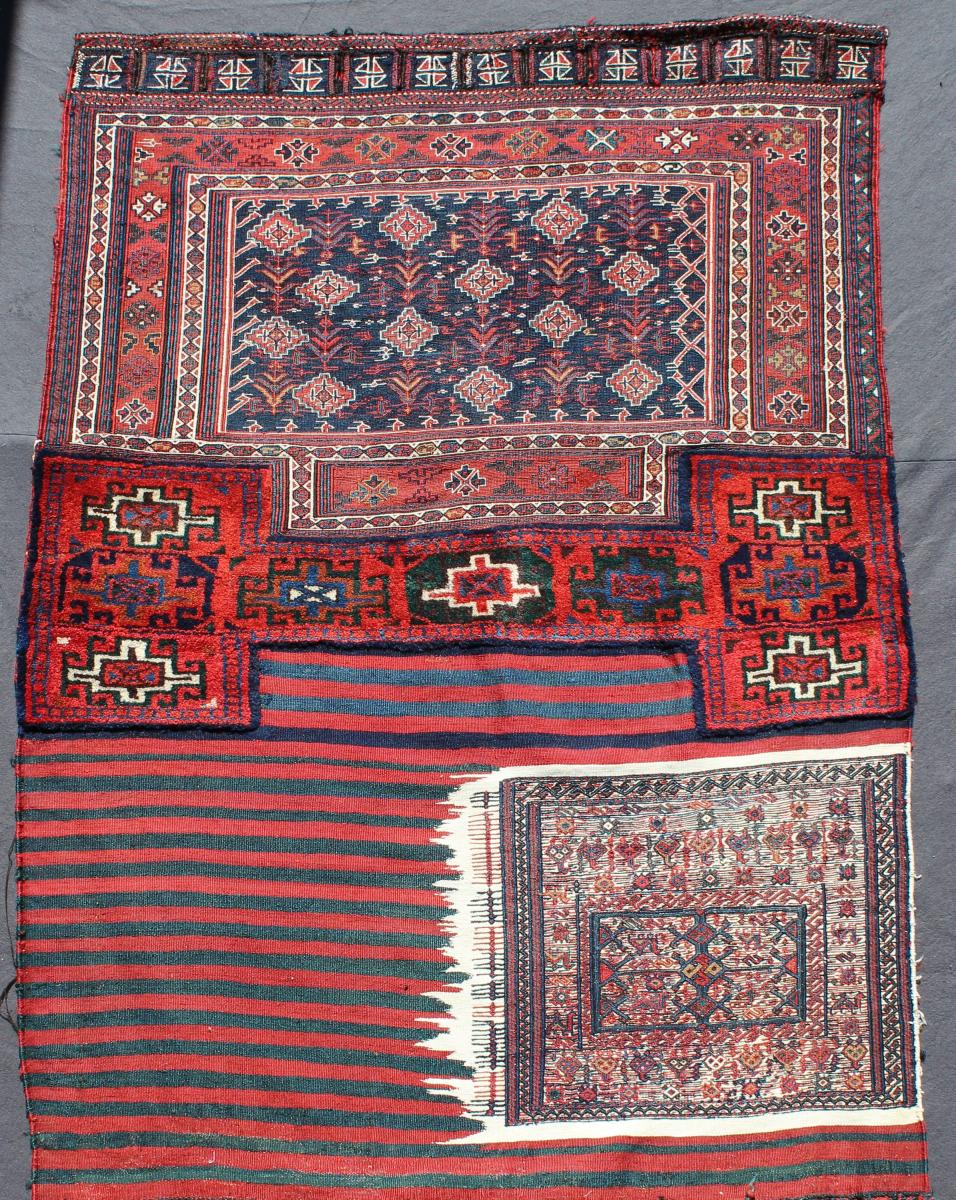
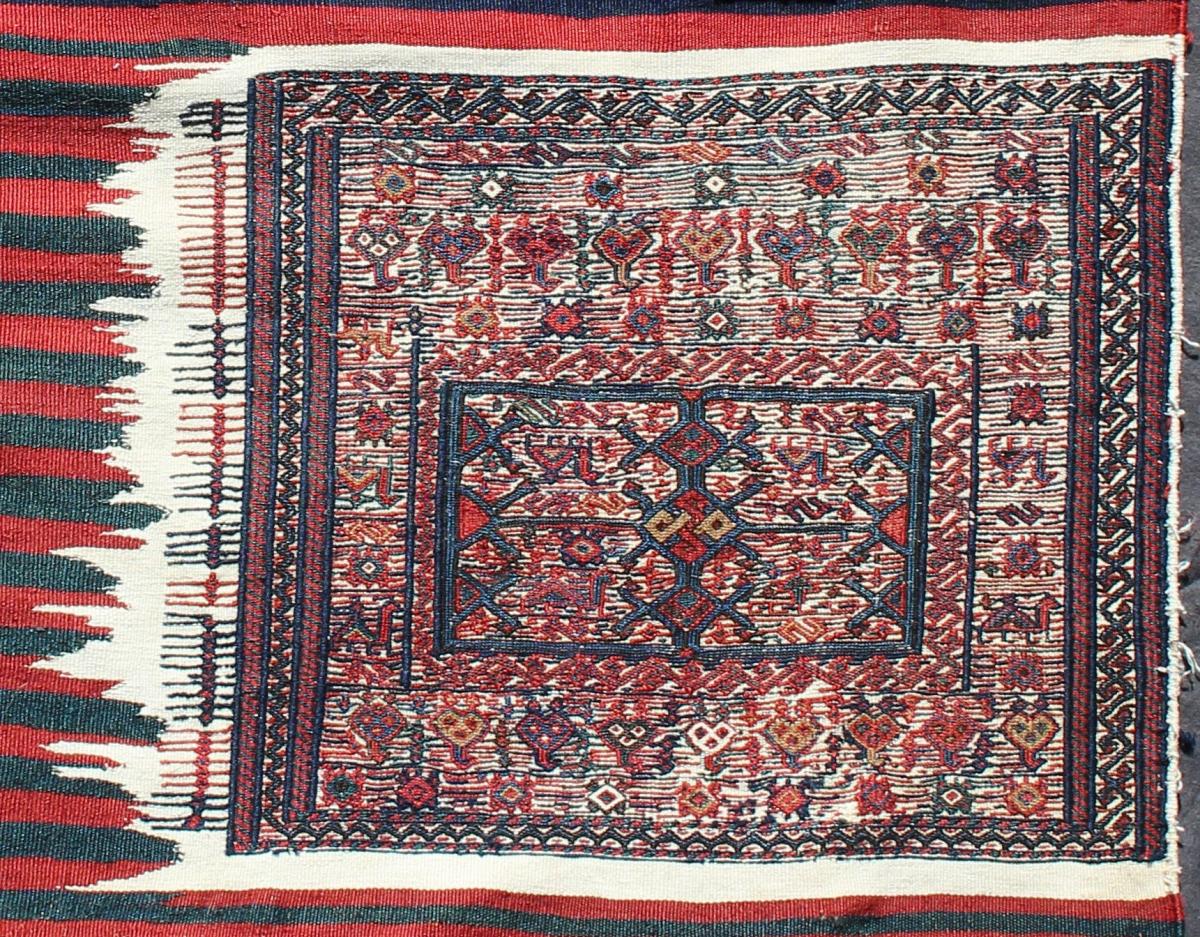
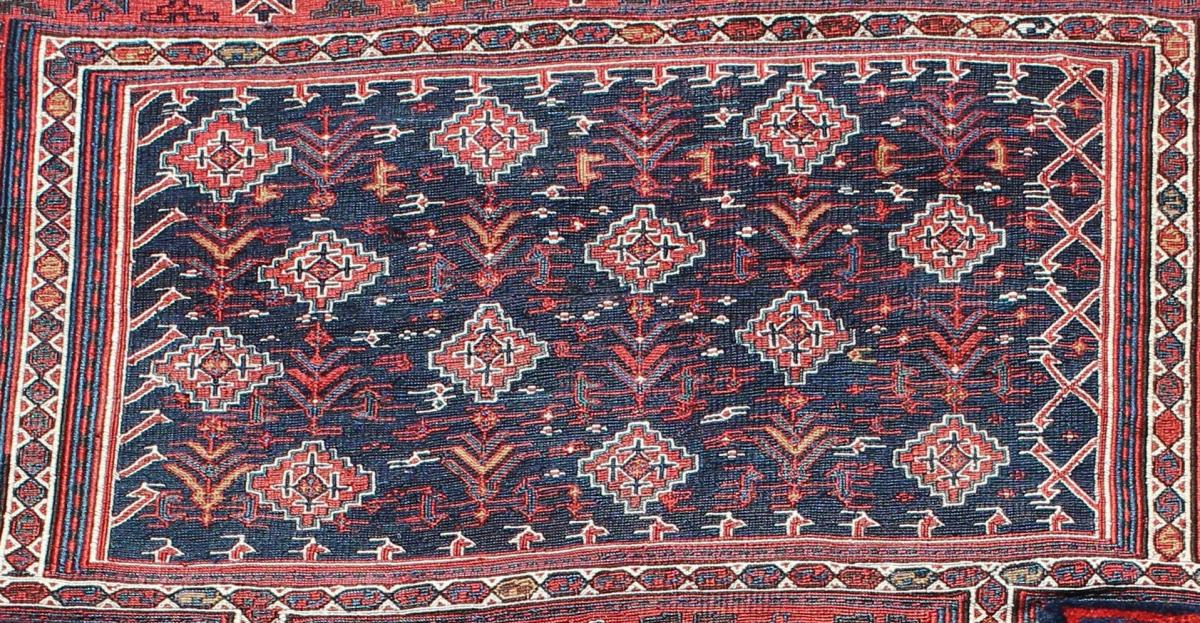
Price
£2500.00This object is eligible for a Certificate of BADA Provenance
The BADA Standard
- Since 1918, BADA has been the leading association for the antiques and fine art trade
- Members are elected for their knowledge, integrity and quality of stock
- Our clients are protected by BADA’s code of conduct
- Our dealers’ membership is reviewed and renewed annually
- Bada.org is a non-profit site: clients deal directly with members and they pay no hidden fees
This is a large late 19th-century Bakhtiari Khorjin bag in mixed technique: pile, kelim and soumak, the so-called "wrapping weft technique". Khorjins of such a large size were used to transport loose items, in this case possibly items of clothing or bedding, on the back of pack animals, mostly, but not exclusively, during migration. The piled section, being more durable than flat weaves, was placed at the bottom of the bag for a very practical reason - it protected the bottom and the corners of the bag from abrasion. The design on the soumak front is a repeat pattern of shrubs and diamond-like shapes, probably derived from flower heads. It is almost identical to that illustrated in Opie, James, Tribal Rugs of Southern Persia. Oregon, James Opie Oriental Rugs, 1981, p. 149. According to Opie, his piece is part of a mafrash .However, when you see the whole bag, as in our example, it is clear that ours is a khorjin.
Very good condition, with a few small repairs.
Dimensions
306 x 110 cm (opened)Condition report
Very good condition, with a few small repairsStock number
5429The BADA Standard
- Since 1918, BADA has been the leading association for the antiques and fine art trade
- Members are elected for their knowledge, integrity and quality of stock
- Our clients are protected by BADA’s code of conduct
- Our dealers’ membership is reviewed and renewed annually
- Bada.org is a non-profit site: clients deal directly with members and they pay no hidden fees


